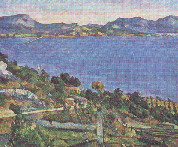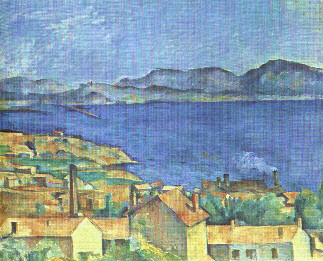
|
|

|
|
" the country is superb. On the two sides of the gulf, arms of rocks advance, while islands, with broad, seem to bar the horizon; and the sea is nothing any more but one vast basin, a lake of an intense blue by beautiful times. With the foot of the mountains, at the bottom, Marseilles stages its houses on low hills; when the air is limpid, one sees, of Estaque, the gray pier of Joliette... then behind, the vault of Our Lady of the Guard bleaches on a height, in full sky...

But L'Estaque does not have only this escape towards the sea. The village, leaned with the mountains, is crossed by roads which will be lost in the medium of a chaos of struck down rocks. The railroad from Marseilles in Lyon runs among the large blocks, crosses ravines on bridges, is abruptly inserted under the rock itself, and remains there during one mile and half, in this tunnel of Nerthe, longest of France.

Nothing equalizes the majesty of these throats which grow hollow between the hills, paths narrow curving at the bottom of a pit, planted arid sides of pines, edge seam of the walls to colourings of rust and blood...
(Extracted from a text of Zola: Naïs Micoulin, Tales and News, library of Pleiade)
Small picturesque port safe from all the winds, Estaque becomes industrial suburbs at the end of the 19°siecle;chimy and cement factory bring work but also harmful effects. Estaque remains a place of Sunday walks, supported by the tram which connects it in Marseilles.
The exceptional light and the beauty of the site will make Estaque famous thanks to the great painters who met there:Cézanne, Renoir, Braque, Dufy, Derain, Marquet...
Today, the beach moved away from Estaque, separated from the sea by several lines of dams. The factories closed, and the village has to become an extremely pleasant residential district. With the sun of the winter or the shade of the plane trees, many Marseillais invade the terraces of the restaurants which border the port.

